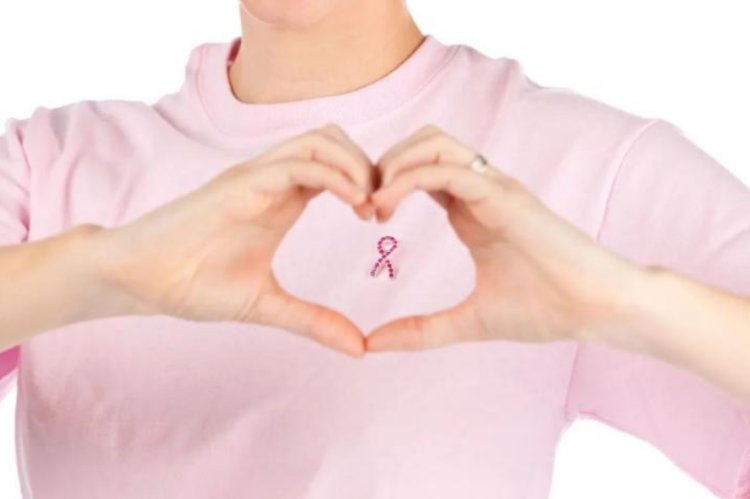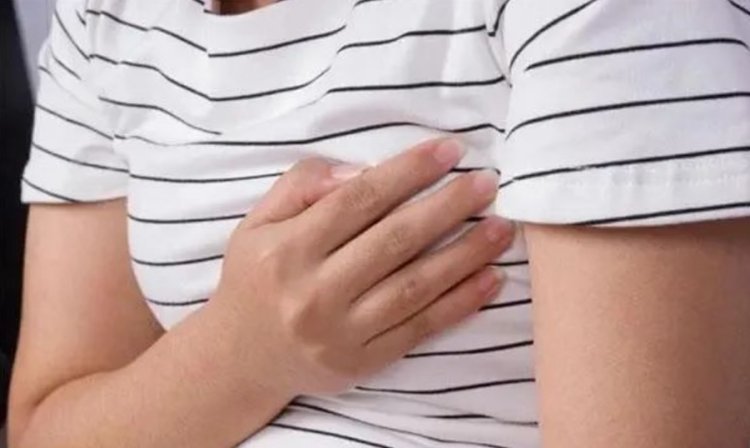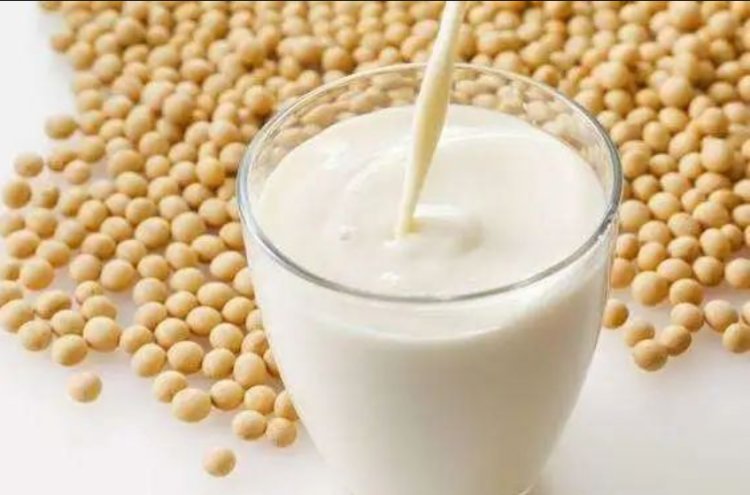Breast cancer has become the number one cancer in the world! What you need to know about breast cancer!
Explore crucial insights on the global rise of breast cancer, empowering you with essential knowledge for prevention, early detection, and suppor

The latest data released by WHO’s International Agency for Research on Cancer shows that Breast cancer has replaced lung cancer as the number one cancer in the world. In my country, there are 416,000 new cases of breast cancer and 117,000 deaths every year. What are the symptoms of breast cancer? Who is at risk? How to self-check? How to prevent it?
This is what you need to know↓↓↓
What Kind of Disease is Breast Cancer?
Breast cancer refers to a malignant tumor that occurs when the glandular or ductal epithelial cells of the breast become cancerous. It ranks first among the incidence rates of malignant tumors in women, while male breast cancer is relatively rare.
In the early stage of the disease, symptoms such as breast lumps, nipple discharge, and axillary lymph node enlargement are often present. In the late stage, distant metastasis of cancer cells may cause multiple organ lesions, which directly threatens the patient's life.
Breast Cancer Symptoms
1. Lump
It is the most common symptom in 95% of breast cancer patients. The shape tends to be round, oval, or irregular. The texture is generally hard. The mass grows rapidly and may have mobility in the early stage.
2. Skin changes
Commonly seen are superficial venous distension, dimple signs, and orange peel-like skin. In patients with inflammatory breast cancer, large areas of chest skin may become darkened, indurated, and thickened, and may be mixed with cancerous plaques and ulcers to form an armor-like chest wall.
3. Nipple and areola changes
For breast cancer in the central area of the breast, invasion of the large ducts can cause the nipple to become flat, sunken, retracted, or even sink into the halo, resulting in areola deformation.
4. Nipple discharge
Breast cancer with discharge accounts for 1.3-7% of the total number of breast cancers. Bloody discharge is common, followed by serous discharge, serous discharge, and watery discharge.
5. Pain
A painless lump appears early. When breast cancer is combined with cystic hyperplasia, there may be swelling and dull pain. Pain in advanced breast cancer often indicates direct tumor invasion of nerves.
6. Swollen axillary lymph nodes
It is rare as the first symptom of breast cancer (unless latent breast cancer), and mostly indicates the progression of breast cancer.
The following 6 types of women are common groups of early-stage breast cancer. It is recommended to go to the thyroid and breast surgery department or breast surgery department of a regular hospital for consultation and treatment suggestions:

Breast cancer risk groups
① Women before and after menopause: The risk of breast cancer increases with age, with the highest incidence occurring between the ages of 40 and 54.
② Early age at menarche, late age at menopause, never having children, or over 30 years old when giving birth to their first child: These people belong to the group of people with high levels of estrogen in their bodies. As the body’s exposure to estrogen increases, the risk of breast cancer increases.
③ People with a family history of breast cancer: The risk of developing breast cancer in women whose mothers have breast cancer is significantly increased due to family inheritance or genetic defects.
④ People with breast diseases: Patients with certain breast diseases (such as benign breast tumors) are at a higher risk than ordinary people. In addition, women who have breast cancer in one breast are also at increased risk of developing breast cancer in the other breast. It is worth mentioning that the incidence of breast lobular hyperplasia is quite high in young women, but the probability of it leading to breast cancer is extremely small.
⑤ Women who are obese and drink alcohol for a long time: In my country, a BMI between 24.0 and 27.9 kg/㎡ is defined as overweight, and a BMI ≥ 28 kg/㎡ is defined as obesity. The specific calculation of BMI is to divide weight (kilograms) by height (meters) squared. Bad lifestyle habits such as drinking alcohol can increase the risk of breast cancer.
⑥ People exposed to ionizing radiation: breasts receiving excessive ionizing radiation treatment, etc.
Breast Cancer Rumors
Men can't get breast cancer?
Some people think that men who do not have mammary glands in their chests will not get breast cancer.
Indeed, male breasts are supported by a small amount of fat and pectoral muscles. There are no breast ducts, breast lobules or other tissues, and they cannot breastfeed.
However, the main cause of breast cancer in men is hormone secretion imbalance, and factors such as excessive drinking and obesity can also induce breast cancer.
If you find that one or both breasts are developing and enlarged like women, and are occasionally accompanied by milk-like secretions, this symptom is likely to be an early signal of breast cancer. Male friends are best to go to the hospital for examination in time.
Are big breasts more likely to cause breast cancer?
There is currently no research showing that larger breasts are more likely to cause breast cancer, and breast size is related to fat and has nothing to do with breast cancer.
Our breasts are mainly composed of adipose tissue and breast glands. The main function of adipose tissue is to maintain the appearance of breasts, while the function of breast glands is to secrete milk.
In addition, mammary glands only account for about one-third, and the rest is all fat. Everyone, regardless of whether they have large or small breasts, has a similar amount of breast glands, and the fat content is the key to determining the size.
Breast cancer development may be related to breast density.
Will drinking soy milk for a long time cause breast cancer?
An experiment that studied the breast density of 200,000 women showed that breast density surpassed family history of breast cancer and other risk factors and became the most important indicator of breast cancer risk. Therefore, women with large breasts are not necessarily prone to breast cancer.
Drinking soy milk not only does not cause breast cancer but can help prevent breast cancer.

A study published in the internationally renowned medical journal "Journal of Nutrition" showed that Asian women can reduce the incidence of breast cancer by one-third by drinking soy milk.
The soy isoflavones contained in soy milk are phytoestrogens, which are essentially different from estrogen in the human body. The effect of soy isoflavones is weak and has a two-way regulatory effect on the human body.
As estrogen changes in the human body, soy isoflavones can not only help the body replenish estrogen but also inhibit or reduce estrogen content.
In addition, it is good for women to eat more soy foods.
An article in the world's authoritative medical magazine "Cancer" pointed out that one of the dietary methods to prevent breast cancer is to eat soybeans and their products in moderation.
Can breast hyperplasia cause cancer?
The vast majority of breast hyperplasia does not cause cancer, and the process of breast cancer cells does not necessarily go through the stage of breast hyperplasia.
Once the endocrine imbalance occurs, the level of estrogen secreted by the ovary is too high and the luteal progesterone is too low, breast hyperplasia is likely to occur.
During puberty and menstruation, breast cells undergo changes such as proliferation and recovery, which have little impact on women's daily lives.
Therefore, you don’t need to worry too much. Breast hyperplasia is a normal physiological phenomenon, and it is two-sided and controllable.
However, if the breast pain and lumps are persistent and do not fluctuate with the menstrual cycle, further medical examination is required to understand the degree of breast hyperplasia to determine whether there is a possibility of cancer.
How to prevent breast cancer?
1. Stay up less late, sleep more
Staying up late not only causes dark bags under the eyes, dry skin, and a withered face but more dangerously, it also increases the risk of female breast cancer.
Danish scientists have found that women who work night shifts are more likely to develop breast cancer, and the longer they work night shifts, the greater the likelihood of breast cancer. This is because artificial light suppresses the body's production of melatonin (a hormone produced only at night), and reduced melatonin levels increase estrogen production.
Therefore, if you want to stay away from breast cancer, the simplest way is not to stay up late and get a good "beauty sleep" with health care effects every night.
2. Avoid excessive smoking and excessive drinking
Drinking alcohol is much more harmful to women than to men. Those who drink one or more drinks a day have a 45% higher risk of breast cancer than those who rarely drink. This risk is most significant among premenopausal women.
It is currently believed that alcohol can stimulate the secretion of prolactin in the anterior lobe of the pituitary gland, and prolactin is related to the occurrence of breast cancer. Therefore, women, especially those before and after menopause, should stop drinking or drink less.
At the same time, drink less coffee, cocoa, and chocolate. These foods contain a lot of caffeine. Xanthine can promote breast hyperplasia, and breast hyperplasia is related to breast cancer.
If women, especially premenopausal women, consume too much of these foods, the risk of breast cancer will be greatly increased along with the large intake of caffeine.
In addition, eat more vegetable oils and less animal fats and margarine. Eat more live fish, fruits and vegetables.
3. Touch your breasts once a month
Women should touch their breasts themselves once a month.
Breast Self-examination Method:
- Facing the mirror, carefully observe the breast shape, surface color, whether there are depressions, whether there is discharge from the nipple, etc.
- First, put your hands on your hips, then slowly raise your hands above your head, and observe the dynamic changes of the breasts with this movement to see if there are any abnormalities. At the same time, also check the contents mentioned in the first step.
- Apply lotion, then spread your fingers, weigh your breasts with your fingertips, and check for lumps.
- Put the other four fingers together and slide them on the breast in a circular motion. If the sliding is stopped, there may be a lump.
Finally, once again, once you find any abnormalities in your breasts, please go to the hospital for examination and treatment by a professional doctor.
4. Natural childbirth, don’t take birth control pills regularly throughout your life
After a project led by the University of Oxford, the Million Women Study on the Causes of Breast Cancer, scientists concluded that the more children a woman has and the longer she breastfeeds, the lower her risk of breast cancer.
If a woman gives birth to 5 children in her lifetime, one every 2 years, and breastfeeds each child, the incidence of breast cancer in this woman will decrease by 50% or more.
From the perspective of eugenics and postnatal care, doctors recommend that women should have children at a young age. Considering their own protection, it is recommended to have children before the age of 30, because progesterone has a great protective effect on women.
In addition, to limit hormonal excess, birth control pills should not be taken regularly throughout life.
5. Get regular exercise to stay in shape
Research shows that physical exercise 4 times a week can reduce the risk of breast cancer by 50%.
Physical exercise can also avoid obesity and hormonal imbalances that lead to reduced immune function.
Controlling body obesity For girls entering puberty and development, while meeting the various nutrients needed for growth and development, they must also control the intake of high-fat and high-sugar foods to avoid excess calories and obesity;
Obesity should be prevented during pregnancy childbirth and after menopause, and maintaining an appropriate weight can reduce the risk of cancer.
6. keep a good mood
Bad emotions are the activators of cancer cells, while happy emotions are the best way to prevent cancer.
Therefore, women must learn to self-regulate and control their emotions and deal rationally with emotional disputes and emotional crises in interpersonal relationships, family, marriage, etc.
Only when you are mentally comfortable can you achieve psychological and physiological balance and build a line of defense against cancer.
Original title: "Breast cancer has become the number one cancer in the world!" What you need to know about breast cancer!
What's Your Reaction?



















